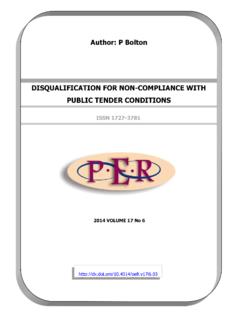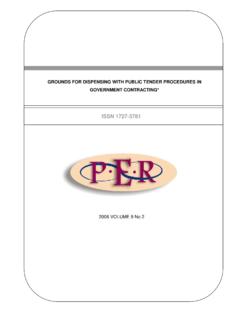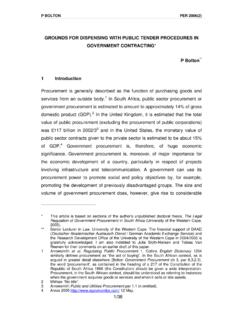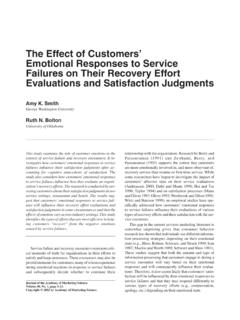Transcription of Pressure Regulators Q&A - Bolton Point
1 Household Water Pressure Regulators Questions and Answers This document addresses frequently asked questions about household water Pressure Regulators . For more information, contact the Southern Cayuga Lake Intermunicipal Water Commission Distribution Department, Monday through Friday, between 8:00 and 4:00 , at 277-0660. Q1: What is the function of a water Pressure regulator? A1: A household water Pressure regulator reduces the water Pressure from the public water main to a Pressure that is usable by the customer and compatible with normal household plumbing and fixtures. It also helps prevent Pressure surges from entering the household plumbing from the public main. High water Pressure can result in dripping faucets and water pipes, and it can damage appliances.
2 Q2: How does a Pressure regulator work? A2: A Pressure regulator is a spring-loaded valve that regulates Pressure on the downstream (house) side of the valve. Altering the degree of spring compression changes the downstream Pressure . Q3: Where should the Pressure regulator be installed? A3: On new installations, the Pressure regulator is usually installed just downstream, (on the house side) of the water meter. On some older installations, the Pressure regulator might be found on the street side of the water meter. Distribution Department staff can help with determining the location of new Regulators and helping to find existing Regulators . Q4: How do I know if the Pressure regulator is working?
3 A4: The best way to know if the Pressure regulator is working is to install a Pressure gage on each side of the regulator. If the upstream gage reads higher than the downstream gage, then the regulator is probably working. If there are no gages, you might notice symptoms of Pressure regulator malfunction. These include sustained or initial bursts of unusually high Pressure at faucets and showerheads and water being discharged from the relief valve on your domestic water heater. Q5: Can I adjust and repair my Pressure regulator? A5: Yes. A homeowner or a plumber can use manufacturer's instructions for adjustment. The adjustment mechanism is usually a screw on top of the regulator.
4 Turning this screw changes the degree of spring compression. Generally, turning the screw clockwise increases house water Pressure and turning the screw counter-clockwise reduces house Pressure . Repair kits for rebuilding Pressure Regulators are usually available from the manufacturer. Q6: To what Pressure should I adjust my Pressure regulator? A6: This is partly a matter of owner preference. Most homeowners set their Pressure at approximately 50 pounds per square inch (psi). Lower settings will help conserve water and prolong plumbing and fitting life while higher settings will have the opposite effects. Q7: Are Pressure Regulators required? A7: Yes. The Commission and its member municipalities require that Pressure Regulators be installed to prevent high Pressure -related damage to household plumbing, fixtures and equipment.
5 Q8: Why must I have a Pressure regulator if the water Pressure at the public main is low or moderate? A8: There are two reasons: 1.) Most public water mains are supplied by pumps or Pressure reducing valves. This equipment may produce temporary high Pressure surges, which can be transmitted to household plumbing. A properly operating household Pressure regulator will help prevent these surges from entering your plumbing. 2.) Your municipality might increase the Pressure in the main that supplies your house. Q9: Who is responsible for installing and maintaining the Pressure regulator? A9: The property owner is responsible for installing and maintaining the Pressure regulator.
6 Rev. 04/03.






